We use accuracy and precision to evaluate the performance of repetitive tasks or measurements. These terms tell us how accurate and repetitive we are in a repetitive task.
Sometimes, we use these terms interchangeably, but they are different and incomplete without other. This article will focus on the difference between Accuracy vs Precision with examples. We suggest you also read this article on simple machines.
What is Accuracy?
Accuracy in a measurement system defines how close a “measured value” is to the “actual or true value”.
In other words, the accuracy of measurement defines the deviation in measured value from an actual value. Let’s consider an example of the temperature sensor to understand what accuracy is?
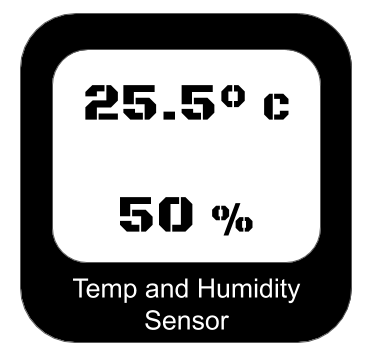
If a temperature sensor measures 25°C room temperature with an accuracy of ±2%, we can calculate the actual room temperature as follow:
Variation in Temperature Sensor Measurement = ±2% of 25°C = ±0.51°C
Measured Temperature = 25°C ± 0.51°C
Therefore measured temperature will be in the range of 24.49°C to 25.51°C. In this way, if we know the accuracy of a measurement system, we can calculate the actual value range from the measured value.
What is Precision?
Precision in a measurement system defines how close the measured values are to each other.
In other words, precision controls the measurement spread and indicates uncertainty in a measurement or manufacturing process. Repeatability and reproducibility are two components of precision.
Let’s consider the above example of the temperature sensor to understand what precision is?
If the temperature sensor measures 25.8°C in repetitive measurements (10 times), the sensor is precise but not accurate. On the other hand, each time, if the sensor measures different values (25.1, 24.9, 25.3, 24.8, etc.). The sensor is accurate but not precise.
Therefore we can conclude precision is independent of accuracy.
Difference between Accuracy vs Precision with Examples
We will try to understand the difference between accuracy and precision by considering day-to-day life examples.
Difference in Accuracy and Precision of Temperature Sensor Reading
To understand the difference, let’s consider the example of the above temperature sensor measurements.
Actual Room Temperature = 25°C
Temperature Sensor Accuracy = ±2%
Measured Temperature = 25°C ± 0.51°C (24.49°C to 25.51°C)
| Temperature Sensor Reading Samples | Observations |
|---|---|
| 25°C, 25.1°C, 25.05°C, 25.01°C, 25°C | Measurement is Precise and Accurate. |
| 25.0°C, 24.9°C, 25.3°C, 24.5°C, 25.5°C | Accurate but not Precise. |
| 26.5°C, 26.45°C, 26.45°C, 26.5°C, 26.47°C | Measurements are Precise but not Accurate. |
| 24°C, 25°C, 25.6°C, 26.3°C, 27°C | Measurement is neither Accurate nor Precise. |
Accuracy and Precision in GPS Tracker Reading
GPS trackers are a very important element in the localization system. When used in self-driving cars GPS trackers should be accurate and highly precise. Therefore in autonomous vehicles, GPS trackers are used along with odometry sensors to improve accuracy and precision.
Example of the Accuracy vs Precision while hitting the Bull's Eye
When a sportsperson wants to hit the bull eye in the below example, they should be accurate and precise. Following conditions can occur When someone tries to hit the bull eye.
- Accurate and Precise
- Accurate but not Precise
- Precise but not Accurate
- Neither Accurate nor Precise.
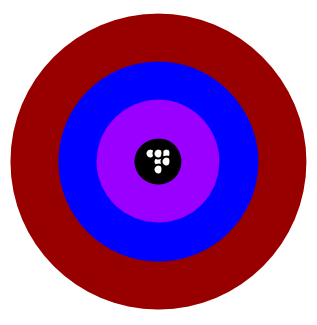
A Sportsperson is accurate and precise if all arrows hit the bull’s eye.
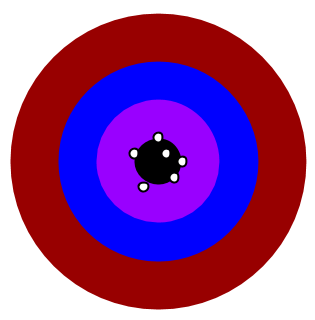
When all the arrows hit near the bull’s eye, but are far away from one another, Sportsperson is accurate but not precise. Therefore either the problem is with his arrow or bow, or he has to improve his precision.
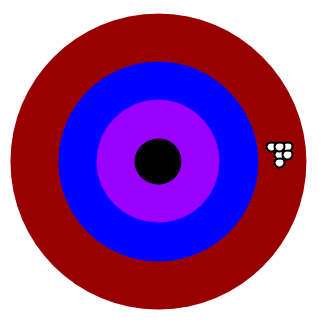
When all the arrow hits away from the bull’s eye, but they are close to one another, Sportsperson is more precise but not accurate. Therefore he needs to shift his focus or add deviation while marking his target.
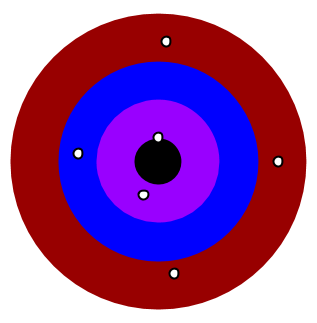
If all the arrow hits away from the center but far from one another. A sportsperson is neither accurate nor precise.
Example of the Accuracy vs Precision in Manufacturing.
Variations in manufactured parts are always a concern during mass production. Therefore accuracy and precision of the manufacturing process & measurements ensure manufactured part quality.
Following conditions can arise during the manufacturing of metal parts with a width of 5 ± 0.2 mm.
Case-1 (Manufacturing Process is Accurate and Precise)
| Sample No | Measured Value |
| 1 | 4.97 mm |
| 2 | 5.01 mm |
| 3 | 5.02 mm |
| 4 | 4.98 mm |
| 5 | 5.02 mm |
Case-2 (Manufacturing Process is Accurate but Not Precise)
| Sample No | Measured Value |
| 1 | 4.82 mm |
| 2 | 5.12 mm |
| 3 | 5.18 mm |
| 4 | 5 mm |
| 5 | 5.9 mm |
Case-3 (Manufacturing Process is Precise but not Accurate)
| Sample No | Measured Value |
| 1 | 4.55 mm |
| 2 | 4.52 mm |
| 3 | 4.52 mm |
| 4 | 4.50 mm |
| 5 | 4.51 mm |
Case-4 (Manufacturing Process is neither Precise nor Accurate)
| Sample No | Measured Value |
| 1 | 4.55 mm |
| 2 | 5.5 mm |
| 3 | 4.6 mm |
| 4 | 4.9 mm |
| 5 | 5.3 mm |
- Case-1 indicates the manufacturing process is centrally aligned and accurate. Therefore our objective is achieved.
- Case-2 indicates the process is accurate but not precise. Therefore we should try to reduce process width.
- Case-3 indicates the process is centered away from the mean value. Therefore you need to work on accuracy,
- Case-4 indicates the manufacturing process is neither centered nor accurate. Both accuracy and precision need improvement.
We will keep updating this article on the difference between accuracy and precision. Add your suggestions, comments, or questions on accuracy vs precision in the comment box. Click this link to know about go-no-go gauges.

Add a Comment